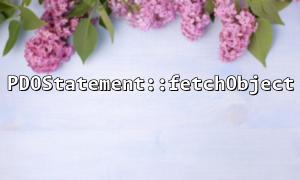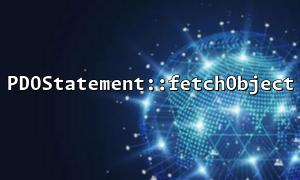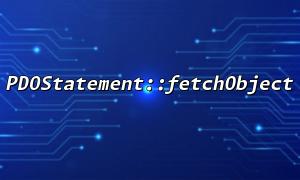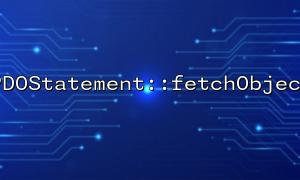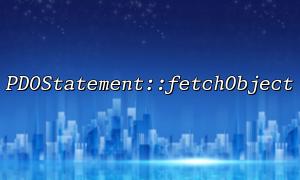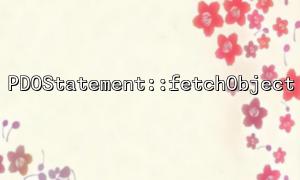When developing large systems or applications that require processing massive data, performance optimization of database queries is an unavoidable issue. PHP developers often use PDO (PHP Data Objects) for database interaction, where PDOStatement::fetchObject is an underrated but very efficient tool. This article will explain in detail how to use fetchObject to improve query efficiency when processing massive data, and provide practical examples.
PDOStatement::fetchObject is a data extraction method provided by PDO. It can directly map a row of data from the query result into a PHP object, rather than a traditional array. The advantages of this approach are:
Smaller memory footprint: Objects are usually more memory-saving than arrays, especially when the number of fields is high.
Faster access speed: object properties are slightly better than array key values.
The code is clearer: organize data in the form of objects to make business logic easier to maintain.
Memory management becomes crucial when queries return hundreds of thousands or even millions of records. fetchObject has natural advantages in the following aspects:
Delayed loading : Each time fetchObject is called, only one row of data will be fetched, instead of loading all data into memory at once, avoiding the risk of memory explosion.
Object multiplexing : By specifying the class name, data can be mapped directly to existing business classes, reducing additional data conversion work.
Garbage-Friendly : PHP objects are more likely to be released by the garbage collection mechanism after they are out of scope, reducing memory peaks during script execution.
Suppose we have a website https://gitbox.net/users that stores a large amount of user data. We need to export information for all active users. Here is a correct demonstration of using fetchObject :
<?php
class User
{
public $id;
public $username;
public $email;
public $created_at;
public function display()
{
echo "ID: {$this->id}, Username: {$this->username}, Email: {$this->email}, Created At: {$this->created_at}\n";
}
}
// Database connection
$pdo = new PDO('mysql:host=localhost;dbname=gitbox', 'dbuser', 'dbpass', [
PDO::ATTR_ERRMODE => PDO::ERRMODE_EXCEPTION,
]);
// Query active users
$stmt = $pdo->query('SELECT id, username, email, created_at FROM users WHERE status = "active"');
// Take out user objects one by one and process them
while ($user = $stmt->fetchObject('User')) {
$user->display();
}
?>
Define User class : Let the query result be converted directly into an instance of the User class.
Process data line by line : Use a while loop, and only one record is fetched at a time to avoid memory accumulation.
Instant processing : Process it immediately after the object is extracted (such as displaying or writing to a file), rather than accumulating all data at once.
Although fetchObject is very powerful, you should also pay attention to the following points when using it:
Field matching : The query field name must be the same as the class attribute name, otherwise it needs to be manually mapped.
Constructor : If the specified class has a parameter constructor, it needs to be used with caution, and it is usually recommended to construct without parameters.
Performance monitoring : In extreme large data volume scenarios, it is recommended to cooperate with batch processing (such as cleaning it once after processing 10,000 pieces).
When facing massive data processing tasks, making good use of PDOStatement::fetchObject can greatly improve the performance and stability of your PHP program. It not only saves memory, but also makes the code more elegant and readable. If your website (such as https://gitbox.net ) is facing the rapid growth of user data, don’t forget to include this trick in your toolbox!
Related Tags:
PDOStatement

